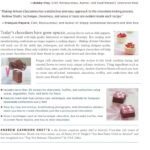Facebook Advertising helps businesses promote their products and services by targeting specific audiences on the Facebook platform.
With precise targeting options and advanced analytics, businesses can reach their desired audience and optimize their ad campaigns for better results.
Facebook Advertising has become increasingly popular among businesses of all sizes due to its ability to reach a vast user base and deliver highly targeted ads. By using Facebook’s sophisticated targeting tools, businesses can define their audience based on demographics, interests, behaviors, and even their location.
This level of precision ensures that the ads are shown to the most relevant audience, increasing the chances of engagement and conversions. Furthermore, Facebook provides comprehensive analytics and tracking tools that allow businesses to monitor the performance of their ad campaigns in real-time. This data-driven approach enables businesses to make informed decisions and optimize their ads for maximum effectiveness. Overall, Facebook Advertising is a powerful tool for businesses to expand their reach, drive traffic, and generate leads or sales.
Understanding Your Audience
hen it comes to Facebook advertising, understanding your audience is the key to running successful campaigns. By knowing who your target audience is and what motivates them, you can create ads that speak directly to their interests and needs. In this blog post, we will explore three important targeting options on Facebook: demographic targeting, interest-based targeting, and behavior-based targeting. Each targeting option has its own advantages, allowing you to reach the right people and maximize the effectiveness of your ads.
Demographic Targeting
Demographic targeting helps you reach people based on specific characteristics such as age, gender, location, language, and education level. By understanding the demographics of your target audience, you can tailor your ads to appeal to their preferences. For example, if you are selling skincare products targeted at women aged 25-34, you can create ads that highlight the benefits of your products for this specific age group. By narrowing down your target audience based on demographics, you can increase the relevance of your ads and improve their performance.
Interest-based Targeting
Interest-based targeting allows you to reach people who have expressed an interest in specific topics, pages, or activities on Facebook. This targeting option is particularly useful for businesses that have a clear understanding of their target audience’s interests and hobbies. For example, if you run a fitness apparel store, you can target people who have liked fitness-related pages or expressed an interest in fitness activities. By showcasing your products to people who are already interested in what you offer, you are more likely to capture their attention and generate conversions.
Behavior-based Targeting
Behavior-based targeting allows you to reach people based on their online behaviors and activities. This targeting option provides valuable insights into how your target audience interacts with Facebook and the internet in general. You can target people who have made specific purchases, visited certain websites, or engaged with particular types of content. For instance, if you are promoting a travel package, you can target individuals who have recently searched for travel deals or engaged with travel-related content. By aligning your ads with the behaviors of your target audience, you can increase the chances of driving relevant traffic and conversions.
By utilizing demographic targeting, interest-based targeting, and behavior-based targeting on Facebook, you can ensure that your ads reach the right people at the right time. Understanding your audience is crucial for running successful advertising campaigns and maximizing your return on investment. Take advantage of these targeting options and create ads that resonate with your target audience’s preferences and behaviors.
Crafting Compelling Ad Campaigns
When it comes to Facebook Advertising, crafting compelling ad campaigns is crucial for capturing the attention of your target audience and driving conversions. By focusing on setting clear goals, creating visually appealing ads, writing persuasive ad copy, and optimizing ad delivery, you can ensure that your Facebook ads are engaging and effective.
Setting Clear Goals
Before diving into your Facebook ad creation, it is essential to set clear goals for your campaign. Whether you aim to increase brand awareness, drive web traffic, or generate leads, defining your objectives will help you tailor your ads accordingly. Setting clear goals enables you to measure the success of your campaigns and further optimize them for better results.
Creating Visually Appealing Ads
Visually appealing ads have the power to instantly grab the attention of Facebook users as they scroll through their feeds. You can create visually appealing ads by using eye-catching imagery and compelling visuals that align with your brand and message. Remember to optimize your ad images for the recommended dimensions to ensure they appear correctly on different devices and maintain their visual impact.
Writing Persuasive Ad Copy
The success of your Facebook ad campaign heavily relies on the effectiveness of your ad copy. Your ad copy should be concise, compelling, and highlight the unique selling points of your product or service. By using persuasive language, focusing on customer benefits, and including a strong call-to-action, you can entice viewers to take the desired action, whether it’s making a purchase, signing up for a newsletter, or visiting your website.
Optimizing Ad Delivery
To maximize the performance of your Facebook ads, it’s crucial to optimize their delivery. Pay attention to factors such as targeting options, ad placement, and scheduling to ensure that your ads reach the right audience at the right time. A well-optimized ad campaign can increase click-through rates, engagement, and ultimately lead to higher conversions.
In conclusion, crafting compelling ad campaigns on Facebook requires a strategic approach. By setting clear goals, creating visually appealing ads, writing persuasive copy, and optimizing ad delivery, you can increase the effectiveness and impact of your Facebook advertising efforts.
Measuring And Improving Ad Performance
Facebook Advertising provides a powerful platform for businesses to promote their products and services to a wide audience. However, simply running ads is not enough to guarantee success. Measuring and improving ad performance is crucial to achieving your advertising goals and maximizing your return on investment (ROI). In this article, we will explore key strategies for analyzing ad performance, testing and iterating campaigns, and using data to refine targeting.
Analyzing Key Metrics
When it comes to measuring your ad performance, it’s essential to focus on key metrics that give you insights into how your ads are performing. These metrics include:
| Metric | Description |
|---|---|
| Impressions | The number of times your ad was shown to users. |
| Clicks | The number of times users clicked on your ad. |
| Click-through Rate (CTR) | The percentage of users who clicked on your ad out of the total number of impressions. |
| Conversion Rate | The percentage of users who completed a desired action, such as making a purchase, after clicking on your ad. |
| Cost per Click (CPC) | The average amount you paid for each click on your ad. |
| Return on Ad Spend (ROAS) | The revenue generated from your ads in comparison to the amount spent on them. |
By analyzing these metrics, you gain valuable insights into the effectiveness of your ads, allowing you to make data-driven decisions to optimize your campaigns.
Testing And Iterating
Testing and iterating are essential components of improving ad performance. By continuously experimenting with different ad elements such as headlines, images, ad copy, and targeting options, you can identify what resonates best with your target audience. A/B testing is a popular method that involves running two versions of an ad simultaneously and comparing their performance. Through iterative testing, you can refine and optimize your ads to achieve better results.
Using Data To Refine Targeting
Data is a valuable resource when it comes to refining your targeting strategy. Facebook provides a wealth of data that you can use to narrow down your audience based on demographics, interests, behaviors, and more. By analyzing the performance of your ads across different target segments, you can identify high-performing audiences and allocate more resources towards them. Utilizing data-driven insights allows you to maximize the impact of your ads and reach the most relevant audience for your business.
Credit: www.upwork.com
Frequently Asked Questions For Facebook Advertising
What Are The Benefits Of Facebook Advertising?
Facebook advertising allows businesses to reach a highly targeted audience, increase brand awareness, drive website traffic, generate leads, and boost sales. It offers precise targeting options, budget control, and extensive analytics for optimizing ad performance.
How Does Facebook Advertising Work?
Facebook advertising works by creating ad campaigns that target specific audiences based on demographics, interests, and behaviors. Businesses can choose from various ad formats, such as image, video, carousel, or collection ads, and set a budget and bidding strategy. Ads are shown to users in their Facebook News Feed or on Instagram.
How Much Does Facebook Advertising Cost?
The cost of Facebook advertising depends on various factors, including the audience size, ad placement, ad format, competition, and bid strategy. Businesses can set a daily or lifetime budget and have control over how much they are willing to spend per click (CPC) or thousand impressions (CPM).
Are Facebook Ads Effective For Small Businesses?
Yes, Facebook ads can be effective for small businesses. With the ability to target specific audiences and measure ad performance, small businesses can reach their target customers more efficiently and achieve better ROI compared to traditional advertising methods.
Conclusion
To maximize the potential of your Facebook advertising campaigns, follow these key strategies: understand your target audience, create compelling and engaging content, optimize your ad placements, test and iterate for continuous improvement, and regularly analyze your data to make data-driven decisions.
Remember, Facebook advertising can be a powerful tool for reaching and engaging with your target audience, so make the most of it by implementing these proven tactics. Stay on top of trends and adapt your approach accordingly to stay ahead of the competition.
Facebook Advertising










